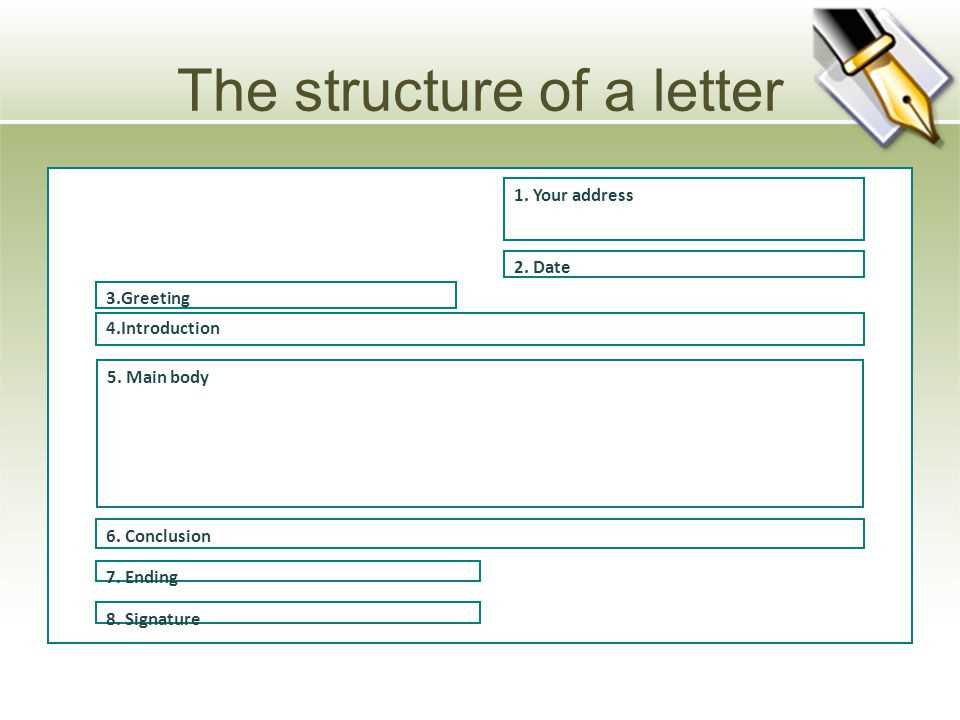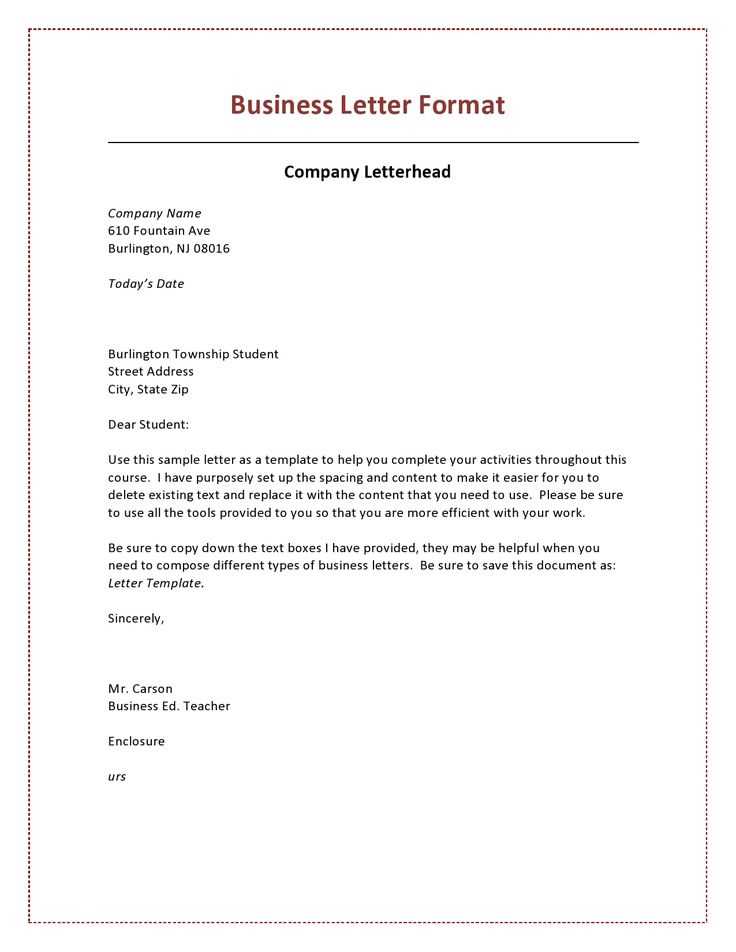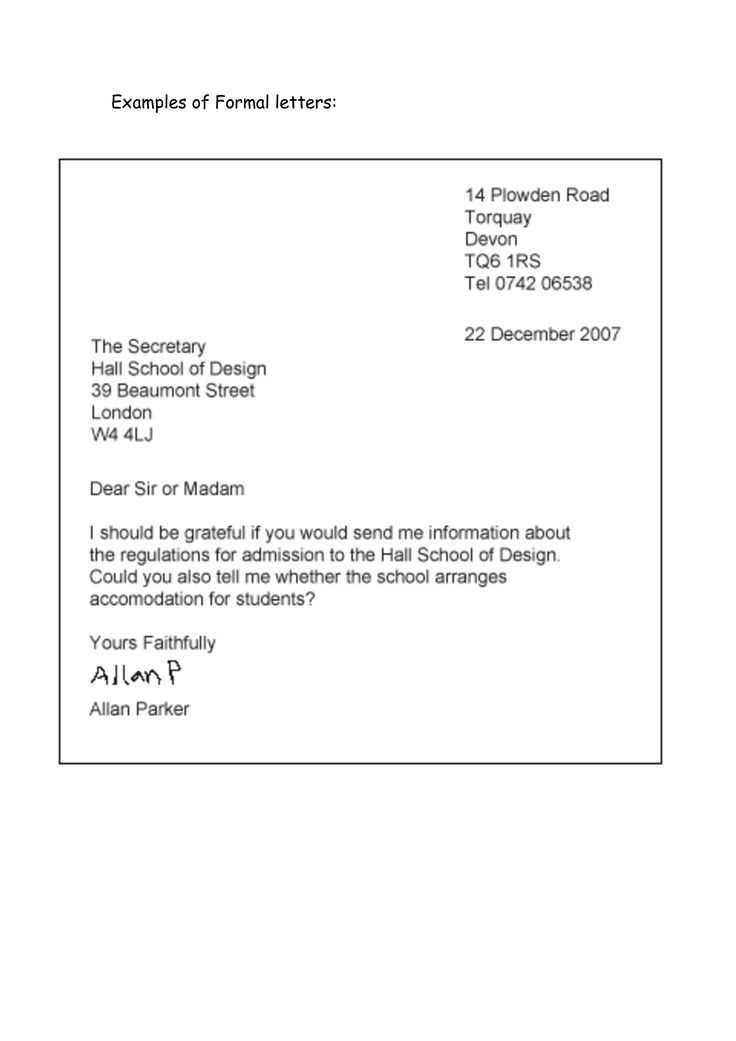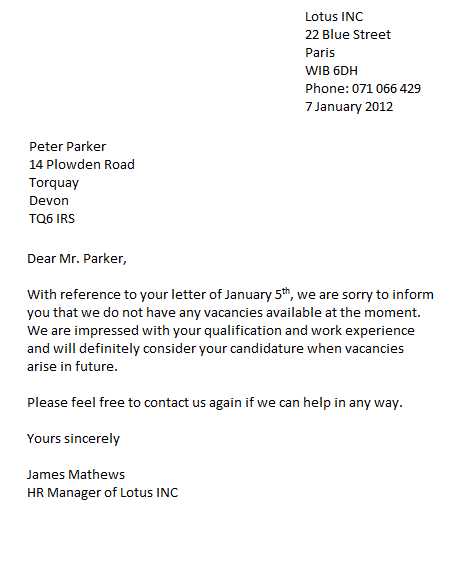English letter template

Basic Structure
When writing a letter, start with your address and date in the top right corner. Follow this with the recipient’s address, aligned to the left. Afterward, include a salutation. A standard greeting like “Dear [Name]” works well in most cases. If you don’t know the person’s name, “To whom it may concern” is an appropriate option.
Body of the Letter

The body should be divided into paragraphs, each focusing on a distinct idea or purpose. Be concise, yet clear. State your purpose right away, and then provide any necessary details. Each paragraph should transition smoothly to the next. Keep the tone friendly but professional.
Conclusion

Wrap up your letter with a courteous closing. Phrases like “Sincerely” or “Best regards” are commonly used. Below the closing, leave a space for your signature and then print your name. If the letter is formal, you may want to include your job title or any relevant information below your name.
Common Letter Types

- Formal Letters: Typically used for business correspondence or when writing to someone you don’t know well.
- Informal Letters: Suitable for friends or family, with a more relaxed tone.
- Cover Letters: Used to introduce yourself when applying for a job, highlighting your skills and qualifications.
Formal Letter Example
Dear Mr. Smith,
I am writing to inquire about the upcoming product launch. Could you please provide more details about the event? I am very interested in attending and would appreciate any additional information.
Best regards,
John Doe
Informal Letter Example
Hey Sarah,
Hope you’re doing well! Just wanted to check in and see if you’re free this weekend for a coffee. Let me know!
Cheers,
Tom
Tips for Writing Effective Letters
- Clarity: Be direct. Avoid unnecessary words that may confuse the reader.
- Tone: Adjust your tone based on the recipient and purpose of the letter.
- Proofread: Always check for spelling and grammar errors before sending.
Detailed Guide on English Letter Template
Choosing the Right Format for Your Correspondence
Proper Salutations and Addressing Recipients
Structuring the Content of Your Letter
Concluding Your Message with the Right Tone
Key Phrases for Professional Communication
Common Errors to Avoid in Letter Composition
To write an effective letter, begin by selecting the appropriate format. If you’re writing a formal letter, use the block format: everything aligned to the left with no indents. For informal letters, you can choose the modified block format with indents and right-aligned date and closing. Ensure the structure fits the purpose and recipient of your letter.
Proper Salutations and Addressing Recipients
When addressing someone, ensure you use the correct title. For formal letters, address the recipient by their professional title and surname, such as “Dear Mr. Smith.” For informal letters, first names are more acceptable. Always use “Dear” for formal or semi-formal tones. Avoid ambiguous greetings like “Hey” in professional contexts, as it may come across as overly casual.
Structuring the Content of Your Letter
Begin with a clear introduction stating the purpose of your letter. In the body, break the content into concise paragraphs that logically flow from one idea to the next. Focus on clarity and brevity–don’t overcomplicate or deviate from the main message. Conclude with a call to action or clear next steps if necessary.
End your letter with a polite closing, such as “Sincerely” for formal letters or “Best regards” for semi-formal ones. This helps leave a positive impression and wraps up your message appropriately.
Using phrases like “I look forward to hearing from you” or “Thank you for your time” adds professionalism and shows courtesy. Always avoid overuse of slang or overly complex language that might confuse the reader.
Be mindful of common errors such as incorrect salutations, poor grammar, or a vague closing. Double-check the recipient’s name, title, and address, and ensure there are no spelling or punctuation mistakes that could undermine the message.